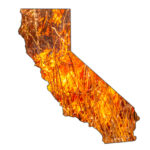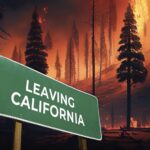Why is wildfire risk such a challenging area for insurers and communities?
As fire chiefs, we are regularly asked about the increasing challenges our residents experience when seeking insurance in areas with wildfire risk. As we started digging into the question of how the insurance industry views risk, we realized that our communities are getting very different messages from the fire service, insurers and policymakers.
Executive Summary
Nancy Watkins, Frank Frievalt and Dave Winnacker are leaders of a strategic alliance formed to address wildfire risk to communities in the wildland-urban interface (WUI).In this Q&A-style article, Watkins, who is a consulting actuary, interviews Frievalt and Winnacker, who are experienced as fire chiefs in California, about their views on what insurance actuaries and insurers should know about wildfire risk today, how they can work with fire professionals and other stakeholders to navigate insurance market disruptions and to drive down wildfire risk in the WUI.
The confusion, uncertainty and conflict surrounding wildfire risk to communities is an artifact of applying trusted legacy strategies beyond their ability to predict outcomes in the wildland-urban interface (WUI).
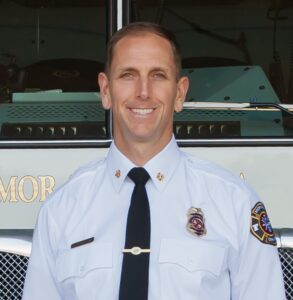 Dave Winnacker is the Fire Chief of the Moraga-Orinda Fire District and a Hoover Institution Veteran Fellow at Stanford University. Reach him at dwinnacker@mofd.org.
Dave Winnacker is the Fire Chief of the Moraga-Orinda Fire District and a Hoover Institution Veteran Fellow at Stanford University. Reach him at dwinnacker@mofd.org.
The gap between actual WUI risk on the ground and legacy risk management strategies has created a condition of insurance market arrhythmia and public policy fibrillation. Despite widespread agreement that the status quo is unsustainable, the lack of a cohesive strategy is creating erratic and at times desperate activity. While there is a great deal of well-intentioned activity in this space, it is failing to produce an effective heartbeat of market and policy practices.
Due to the fragmentation of the data environment and lack of an organizing system, much of the current effort being directed toward this space is resulting in “level of effort” metrics disassociated from outcomes. Mitigations can only be linked to outcomes when their “level of efficacy” is established and when the presence or absence of these measures can be reliably known.
Why is the WUI so important in the insurance dialogue?
The insurance industry is responding to significant increases in conflagration levels of property loss, defined by structure-to-structure fire spread, most of which have occurred in the past decade.
WUI conflagrations result from the intersection of three interrelated but distinct fire spread pathways: vegetation-to vegetation, vegetation-to-structure and structure-to-structure. Conflagrations are a unique situation because the insured assets (structures) also represent risk to surrounding assets. Once structure-to-structure separation distances fall below 70 linear feet, buildings themselves become the primary fuel type carrying fire. At this point, the fire ceases being a wildfire, dominated by vegetative fuels, and transitions into a structure-to-structure conflagration of much higher intensity.
How did we get here? Haven’t we been investing in better fire protection?
Current conditions for conflagration are the result of three incremental changes over time:
- Accumulation of vegetative fuel since the early 1900s, due in part to the industrialization of wildland fire fighting and policies such as the U.S. Forest Service “10 a.m. policy” that resulted in the exclusion of wildfire from fire-dependent landscapes.
- The widespread construction of homes in the WUI through rural development.
- A climate change-driven increase in the number of days with weather conditions conducive to large wildfire development.
Through the combination of these three incremental changes, we have accrued a significant buildup of wildfire risk that manifests through increasing annual wildfire losses as landscapes seek to return to balance.
In fire-dependent landscapes, such as the Western U.S., there are no long-term, financially sustainable fuel reduction strategies that do not include some degree of managed fire. Indeed, our ecosystems need more frequent but less intense wildfire to restore them to balance, and simply wishing for a fire-free future is not an option.
For these reasons, strategies relying on fire exclusion through fire suppression alone are structurally incapable of success.
What got you interested in working with the actuarial community?
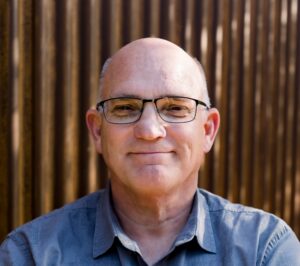 Frank Frievalt is Director of the WUI Fire Institute at Cal-Poly San Luis Obispo and former Mammoth Fire Chief. Reach him at ffrieval@calpoly.edu.
Frank Frievalt is Director of the WUI Fire Institute at Cal-Poly San Luis Obispo and former Mammoth Fire Chief. Reach him at ffrieval@calpoly.edu.Actuaries are an essential and unique link between wildfire risk-relevant facts on the ground, the accurate pricing of risk and the manner in which insurance markets communicate this risk to residents in fire-prone areas. Without intervention in the form of effective parcel-level and community-level mitigation, reliable and affordable risk transfer through the insurance market is in real peril.
Only a clear link between the factual presence or absence of effective mitigations in the WUI, at actuarially significant levels, will reduce risk, limit losses and set conditions for the return of a sustainable insurance market.
For a number of reasons, we believe that wildfire risk has been historically underpriced by the insurance market, contributing to a pattern of accrued risk in WUI communities from decades of undervaluation. A general strategy to correct this situation will require a reconciliation of existing rates to match actual conditions on the ground, sustained with ongoing and accurate future updates.
Presently this is not realistic, because carriers cannot know the actual risk to individual properties they insure without knowing the risk represented by conditions on adjacent properties, which are almost certainly insured by a competitor. There are roughly 44 million properties in the western U.S. within high-fire-hazard areas, making this a daunting task.
Further, in the absence of meaningful mitigations to reduce wildfire losses, accurate pricing of risk would rapidly make many policies unaffordable.
For these reasons, strategies relying on insurance pricing alone are structurally incapable of success.
What about the role of state regulators in helping insurance markets?
Regulation, in and of itself, does not provide an essential risk-transfer service; it provides oversight of those services. Although residual markets of last resort such as FAIR Plans are an extension of regulation, they rely almost exclusively on assessments from admitted carriers to provide capacity and cover losses. In the absence of a robust private insurance market with access to global reinsurance capacity, these plans are not fiscally sustainable without significant risk transfer to taxpayers.
As fire practitioners, we have observed that regulation that artificially suppresses insurance premiums and thereby disrupts risk signals to communities has led to a misunderstanding of wildfire risk. While well-intentioned, this approach has resulted in a lack of urgency on the part of many WUI communities to take substantive measures to reduce their risk, thus increasing the threat of conflagrations destroying structures, lives and critical infrastructure. It also has led to reduced availability of homeowners insurance options.
Further, while insurers and reinsurers theoretically can reset portfolios and manage wildfire risk through annual renewal and nonrenewal decisions, the lending industries have made 15-year to 30-year commitments from which they cannot easily reset. Builders and developers face similar time horizons and need some certainty of being able to secure insurance in order to supply much-needed housing.
For these reasons, strategies relying on regulation alone are structurally incapable of success.
What is a proposed solution?
To extend beyond suppression, pricing and regulation approaches, we must now add evidence-based mitigations that have actuarially significant value. The unique nature of conflagration in the WUI requires a purpose-built system to unlock the value of group action and actuarial analysis. To meet this need, we propose the “Wildland-Urban Interface Fire Pathway Disruption System” (WFPDS). WFPDS provides the recommendations required to systemically disrupt the three fire pathways leading to conflagration through a continuous improvement cycle of risk visualization, mitigation optimization and verification.
This system enables a comprehensive understanding of community-level risk through a combination of new tools and resources:
- Speed-based vegetation-to-vegetation fire pathways approaching a community. (Related textbox: “Why Speed Matters”)
- Optimized fuel treatments to slow a fire’s spread rate to the transfer points entering a community.
- Mitigation data collection and management via an accessible WUI data commons.
- Parcel-level mitigation information aggregated into multiple community-level views, creating a landscape understanding of the potential for vegetation-to-structure pathways.
- Regional firefighting resource response times, command relationships and capability, creating an understanding of active measures that will be taken to disrupt the structure-to-structure pathway.
(The Wildland-Urban Interface Fire Pathway Disruption System, WFPDS, was jointly developed by the authors and Dr. Hussam Mahmoud, Professor, Civil and Environmental Engineering, Colorado State University.)
Prioritized mitigations include: proven, science-based measures to physically disrupt each of the pathways through work to reduce the horizontal and vertical continuity of vegetation within about a half-mile of the community; efforts to reduce receptive vegetative fuel beds and continuous combustible vegetation within 100 feet of structures; and complementary measures to increase the presence of home-hardening retrofits.
All of these efforts are paired with verification through objective reporting, utilizing available technology, to inform a continuous improvement system. Over time, this system will provide the data necessary to iteratively refine the evidence-based efficacy of mitigations and their valuation. This data will then be used to refine and update numerous critical elements including:
- Heat transfer science.
- Modeling of the three fire pathways.
- Efficacy of mitigations and decay interval.
- Actuarial valuation of mitigations and average annual losses avoided, for cost-benefit analysis.
- Data integration to enhance fire suppression responses.
- Post-fire reconstruction and mitigation efficacy analysis.
- Effective building codes, land use and fire protection policies that promote resilience in the WUI.
- Understanding of barriers to mitigation.
- Support for mitigation adoption and maintenance.
Any last messages for the actuarial community?
While the participants in our current insurance and regulatory system recognize the status quo is unsustainable, so far none have achieved a comprehensive path to a sustainable alternative that will demonstrably reduce wildfire risk and stabilize insurance markets in the WUI. In this area, actuaries can provide the link between evidence-based mitigation presence/absence data, and the pricing of residual risk that will enable the self-sustaining insurance markets our communities require.
Additionally, this actuarial analysis will provide valuable information about how to optimize and prioritize the use of public and private funds toward efficacious mitigation projects.
We have a limited window to act while our tottering legacy systems are still standing, and it is critical that the fire service, industry, government and community leaders have a shared confidence that wildfire risk can be measured and managed. With that confidence, we can move forward in pragmatic alignment around the realities of fire science and the known risk reduction measures which can limit wildfire loss in the WUI.









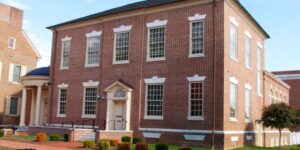











 Acrisure to Buy MGA Vave From Canopius
Acrisure to Buy MGA Vave From Canopius 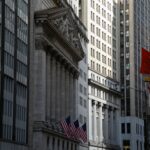 Bankers Readying U.S. IPOs at ‘Overwhelming’ Pace Ahead of 2026
Bankers Readying U.S. IPOs at ‘Overwhelming’ Pace Ahead of 2026  How One MGU Grew Fivefold When Capacity Fled Cat-Prone Property Markets
How One MGU Grew Fivefold When Capacity Fled Cat-Prone Property Markets  Aon Adds to List of Brokers Suing Howden US for Alleged Poaching, Theft
Aon Adds to List of Brokers Suing Howden US for Alleged Poaching, Theft 

